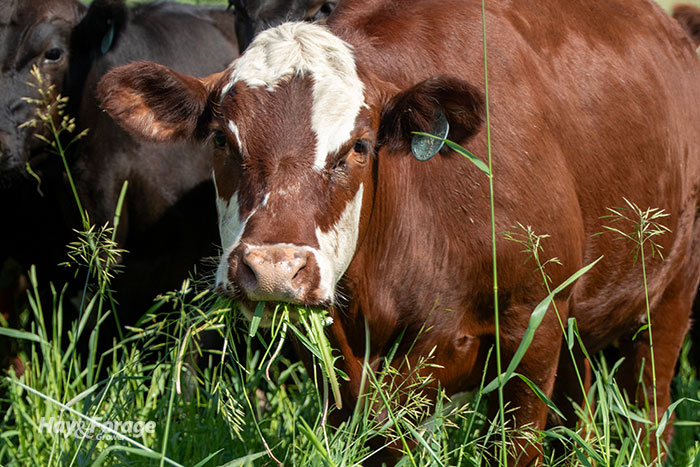Graze for gain |
| By Mike Rankin, Managing Editor |
|
|
 Grazing success often starts with having a good forage base in place that will thrive, persist, and provide exceptional quality forage. However, once that is accomplished, there is still work to be done. “We need to be proactive in how we approach our pastures,” says Jennifer Tucker, an extension beef specialist with the University of Georgia. “It’s never a matter of if pasture stresses will occur, it’s always a matter of when it will happen. Being prepared for a stress is always better than reacting to one.” To that end, Tucker offers three principles that need to be followed. Develop a system A comprehensive grazing system entails everything from the type of forages grown or available to the strategies used for efficient use of the available resources to meet livestock nutritional needs. “Having a defined grazing system, whatever it may be, is essential in managing forage production surpluses and shortfalls,” Tucker asserts. “It doesn’t matter whether it is the utilization of a single unit of land with unrestricted access or a management intensive system that employs multiple grazing methods and pasture alternatives.” With no two identical operations, Tucker notes that what works well for one producer might not fit for another. Defining and making frequent adjustments to a grazing system will improve both grazing efficiency and forage utilization; however, even the best planned grazing system will not prove successful if soil fertility is limiting and pastures are overstocked. Maintain adequate height and rest For optimal performance, begin grazing pastures before the forage is too mature and ensure grazing ends at the recommended height for the species present (see table).  *Adapted from Southern Forages, 5th Edition Leaving animals on pastures too long or overstocking can result in permanent productivity losses and weed encroachment. Adhere to following specific height recommendations for the species present in the pasture and give pastures an adequate rest period between grazing events. This will provide positive benefits that are apparent in stand persistence and animal performance. Stock appropriately “Adding more animals to the herd may seem like easy money, but the effects of overstocking, even for a short period of time, can be devastating to forage production and your pocketbook,” Tucker says. “Overstocking, or having too many animals on not enough forage, remains one of the common occurrences we see on livestock farms today.” Overstocking leads to overgrazing, which leads to pastures with high levels of undesirable plants and low-quality forage. It also results in more dollars spent on additional supplementation and stored feed to maintain livestock performance. Added expense for seed inputs and forage establishment occur once a stand has been permanently depleted. “When forage production becomes a limiting factor for an extended period of time, it’s time to adjust stocking or destock completely to let the forage recover from overuse and abuse,” Tucker advises. “No single adjustment in management can have a bigger impact on livestock profitability than correcting stocking rates. Anticipate forage pitfalls before they happen to proactively manage stocking,” she adds. Although cattle prices are currently favorable, it is also true that cheap inputs aren’t coming back soon, if ever. Adding cattle can be a profit winner, but it can equally be a profit loser without adequate forage. With grazed forage being the cheapest feed resource available, do all things possible to preserve and maintain your forage base and have a plan when environmental conditions turn for the worse. |
